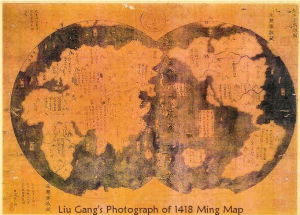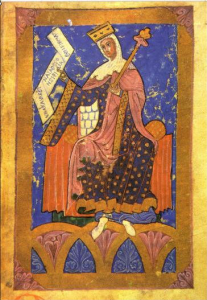Then Reigning Queen of the Forgotten Isle of Santosha
Introduction
Much has been said regarding Seneca’s prophecy concerning the discovery of The Americas. As a theoretical historian specializing in the anthropological space-time relations of past and future events, it has been my life’s work to debunk this and other misconceptions of trans-linear history. Through the kindness extended to me by my dearest of friends, and the story’s narrator, I have written this brief introduction to correct the misconception that Cristóbal Colón, as the Spanish know him (Christopher Columbus) is the subject of Seneca’s vision. I have concluded it is rather the Portuguese explorer: Juan Rodrigo Cabrillo.
Seneca studied the rare and archaic texts lost to us in modern time at Alexandria, where knowledge of the islands West of the Pillars of Hercules must have permeated the mythology of the ancient mariners. The Phoenicians insinuated these western isles in their lore and myth, whose stories have traveled across the chasm of time. Early Iberian traders during the reign of King Solomon, knew of a great island in the Western Atlantic, calling it “India Occident”, or India Superior”, the Chinese, as well as the Indians, Greeks and Romans alluded to this paradise. As great a discovery as the Americas were to the expanding European powers, we see her greatness fading just half a millennium later.

Cabrillo is credited with Spain’s discovery of the western coast of North America, including California. Ships records point to the Channel Islands off the coast of Santa Rita as his last resting place. Among these isles is mentioned in the log of Bartolome Ferrer—a Basque from Bilbao, Spain—Cabrillo’s ship’s pilot, and his successor, the “Forgotten Isle of Santosha”, Sanskrit for contentment or rest. It is told this island rose out of the sea, where previously there had been only open ocean, to greet the Spanish armada who sought an island with proper anchorage to row ashore and give burial to the late Capitan Cabrillo.
An isle of other worldly import, more specifically, an Eden transformed was Seneca’s vision…Utopia: an eternal place in the sun.
It is my view that the saga of the Cowboy Surfer’s Journal (CSJ) transcends astrophysics as it relates to being a human discipline—irrespective of man’s origins, chemical elements pale in relation to an assembly of physical, cognitive, intuitive, and spiritual imperatives. Consequently, this is a story of utmost significance for all of humankind, touching on the universal nerve of human mythology, while resting firmly atop of the subconscious mind.

Cowboy Surfer’s Journal is a vision of this Original Blueprint, or more specifically, a recounting of events past and sensibilities now archaic. This glimpse into the past, similar to the lot of Theseus following the string left to him by his sweet Ariadne in the labyrinth, provides the hope that may help us retrace our return to paradise.
—Percival Elijah “Leopard’s Paw Sanctuary” Yala National Park, Sri Lanka

